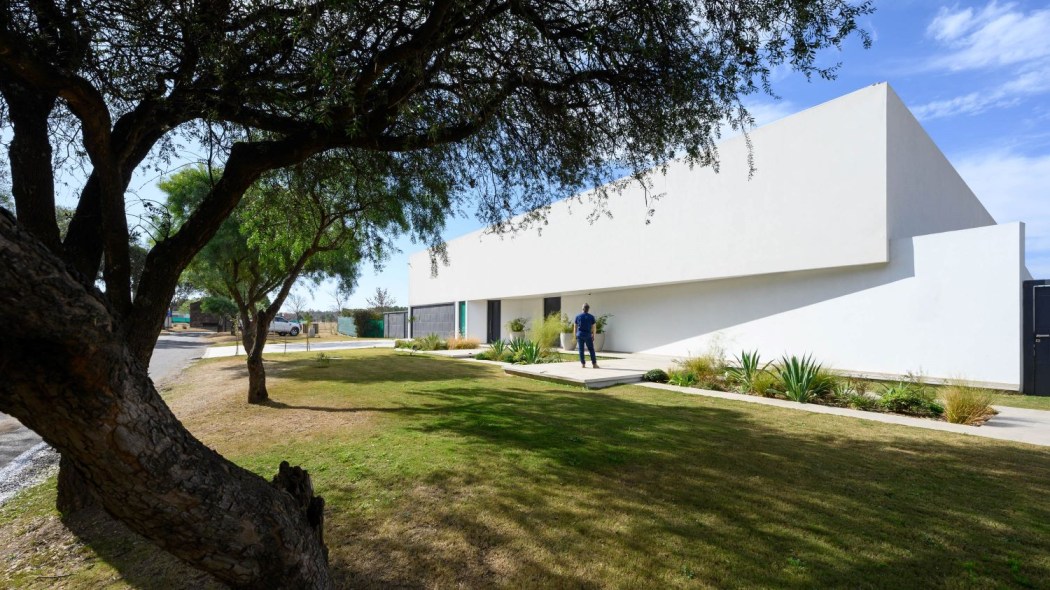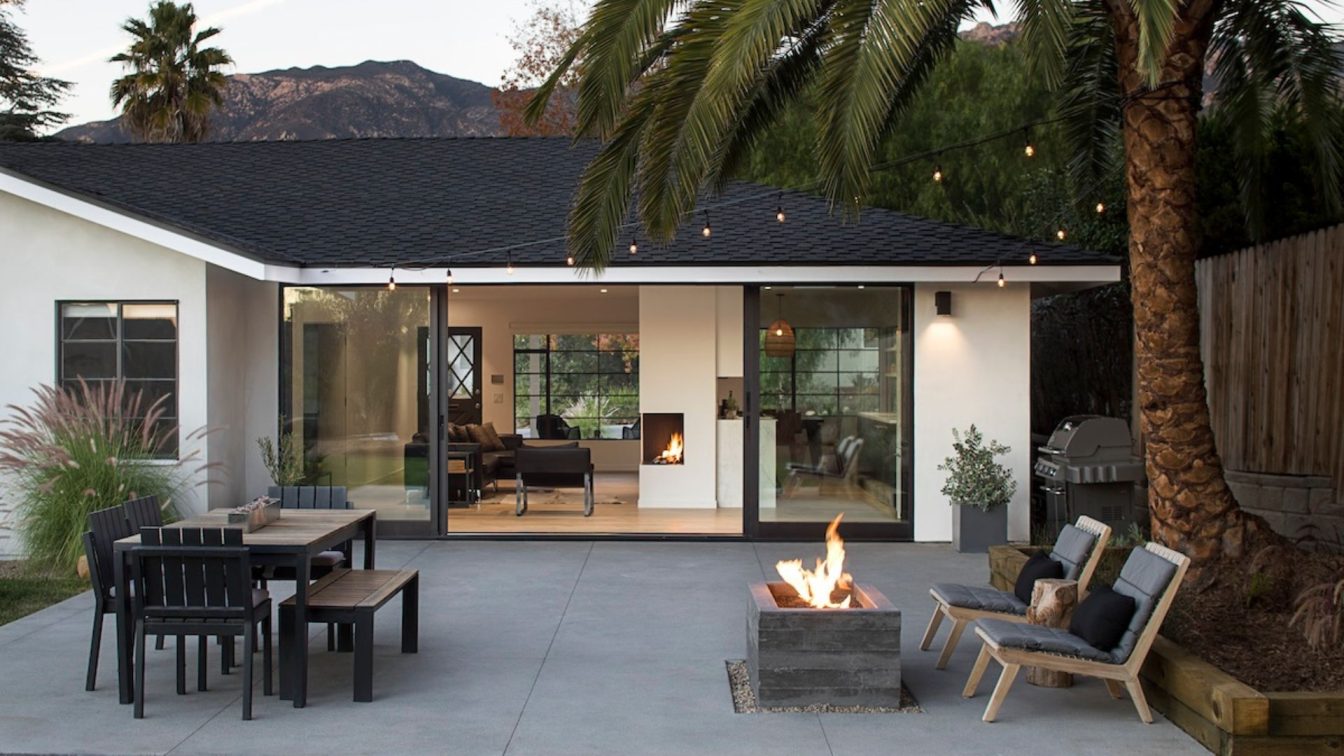monovolume architecture + design: Curved shapes, large windows, and materials echoing the colours of nature define Villa EB. The property sits on the hills in the southwestern side of the province of Bolzano, along the famous Wine Route, amid vineyards and small forests. However, this panorama is often interrupted by other private villas built in recent decades, which are increasingly changing the primary landscape.
Hence the desire to create something in complete harmony with the shapes and colours of the surrounding landscape. This is the context in which Villa EB is set. The property is a two-family house created following the complex renovation of a pre-existing villa dating from the early 1960s. Although the previous estate had high standards and was built with top-quality materials and finishes, it showed all the limits of a house conceived according to the standards of the time.
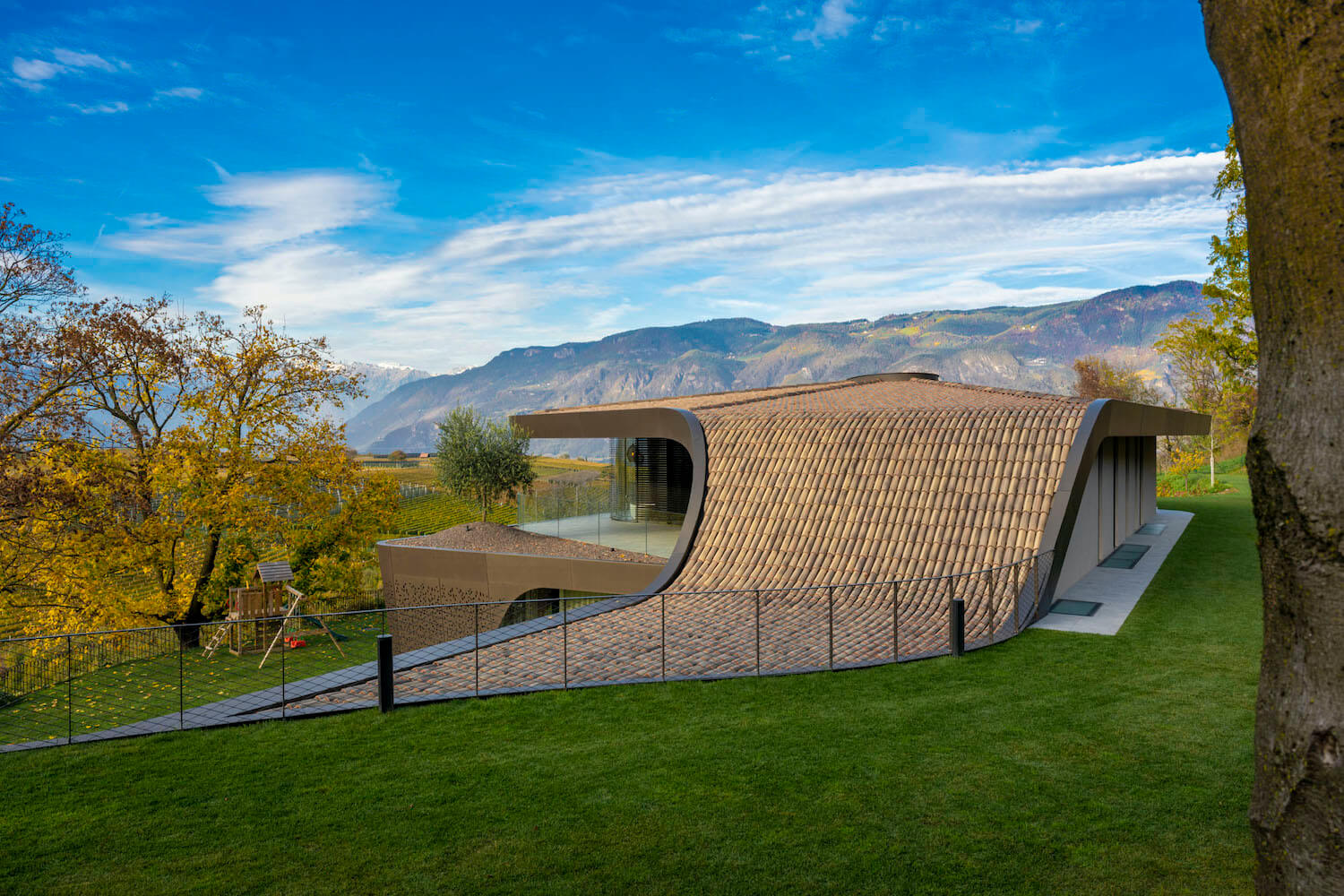 image © Giovanni de Sandre
image © Giovanni de Sandre
For example, it had a very closed structure, with few glass surfaces compared to solid walls, limited views of the landscape and very low slabs, almost impeding the relationship with the surrounding nature. Such design was in total contrast with the idea of the new owners. They wanted a house that could be “incorporated” into the surrounding space, such as the garden and the nearby woods, but above all, able to blend with the landscape without sacrificing modern lines and large windows that allow enjoying the view from different angles.
At first, the building is hardly visible; a tiled roof rises slightly from the street level to wrap the coverage. The land’s natural slope hides the structure, which manifests itself only once you enter its forms. A “Pfitscher Gneiss” stone-paved path (gneiss is a rock of the Vizze Valley) leads from the main road to the living area located at a lower level than the street. This “camouflage” is also emphasised by the earth-coloured metal sheet cladding, designed with voids to generate graphic games that make the sheet’s “flat” element less invasive. The terraces are closed by glass railings to avoid creating a further filter. Some areas of the terraces, which feature a curved design, are enriched with stones of the same color as the roof tiles to create a continuum between verticality and horizontality.
 image © Giovanni de Sandre
image © Giovanni de Sandre
The exterior features large living spaces both on the ground floor and in the upper part, whose continuity with the interior is made possible through large sliding doors. These spaces have a wooden ceiling cladding that softens the grey tones of the floors, creating a contrast that echoes that between stone and wood in nature. Stunning views can be enjoyed from every corner of the house. The bathroom on the first floor, for example, comes with a bathtub positioned near the curved glass wall, almost as if it were outside.
Inside, the great spiral staircase in metal and wood, which follows the concept of organic form, connects the ground and the first floors and is topped by a large oval skylight, clearly visible in the zenithal view, in a symbiotic relationship between light and matter. The infinity pool also fits into the landscape, creating a further continuum between the house, the hill and the sky, in harmony with the landscape right in front of it.
These are the foundations of the project, where spatial expedients such as increasing net heights on each floor and remodulating the dividing walls in the living area on the ground floor to create large living spaces without losing the form/function relationship between the various areas (living room, kitchen and study) reflect the choice of external materials. These include the “Mönch und Nonne” tiled roof (where the lower “nun” tile interlocks with the upper “monk” tile), the “Pfitscher Gneiss” natural stone walls, the exposed wood cladding, and the architectural elements in earth-brown metal sheet.
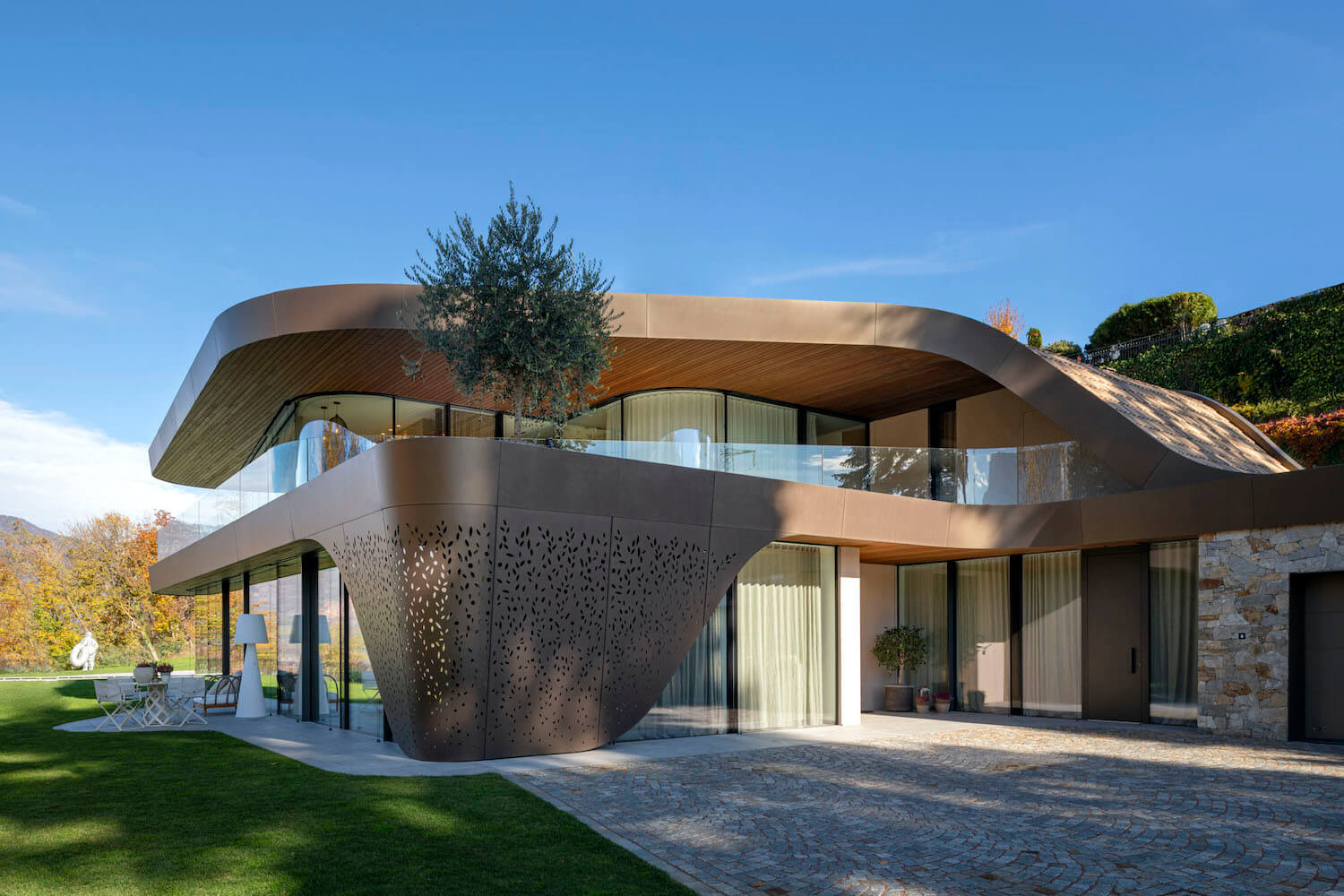




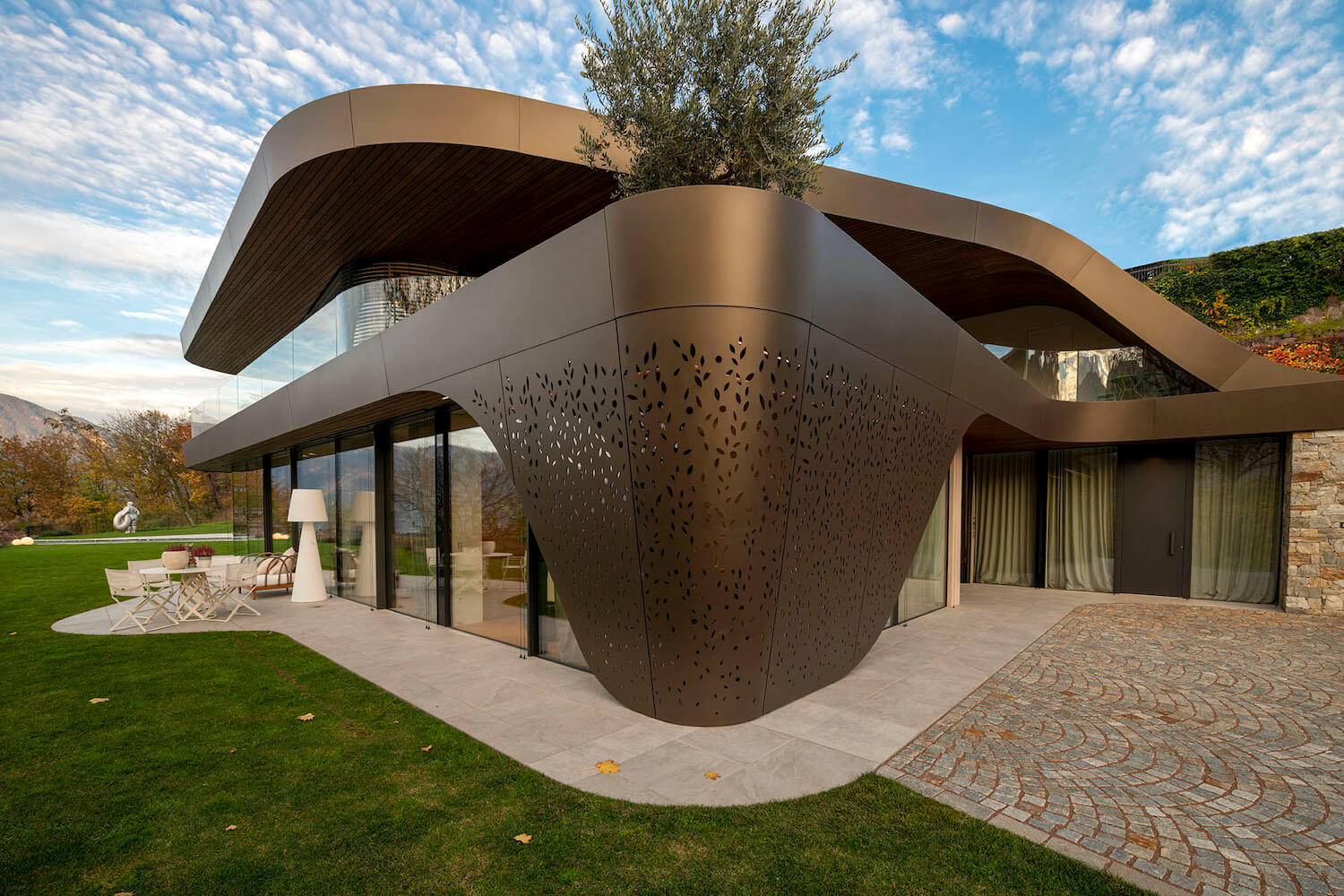

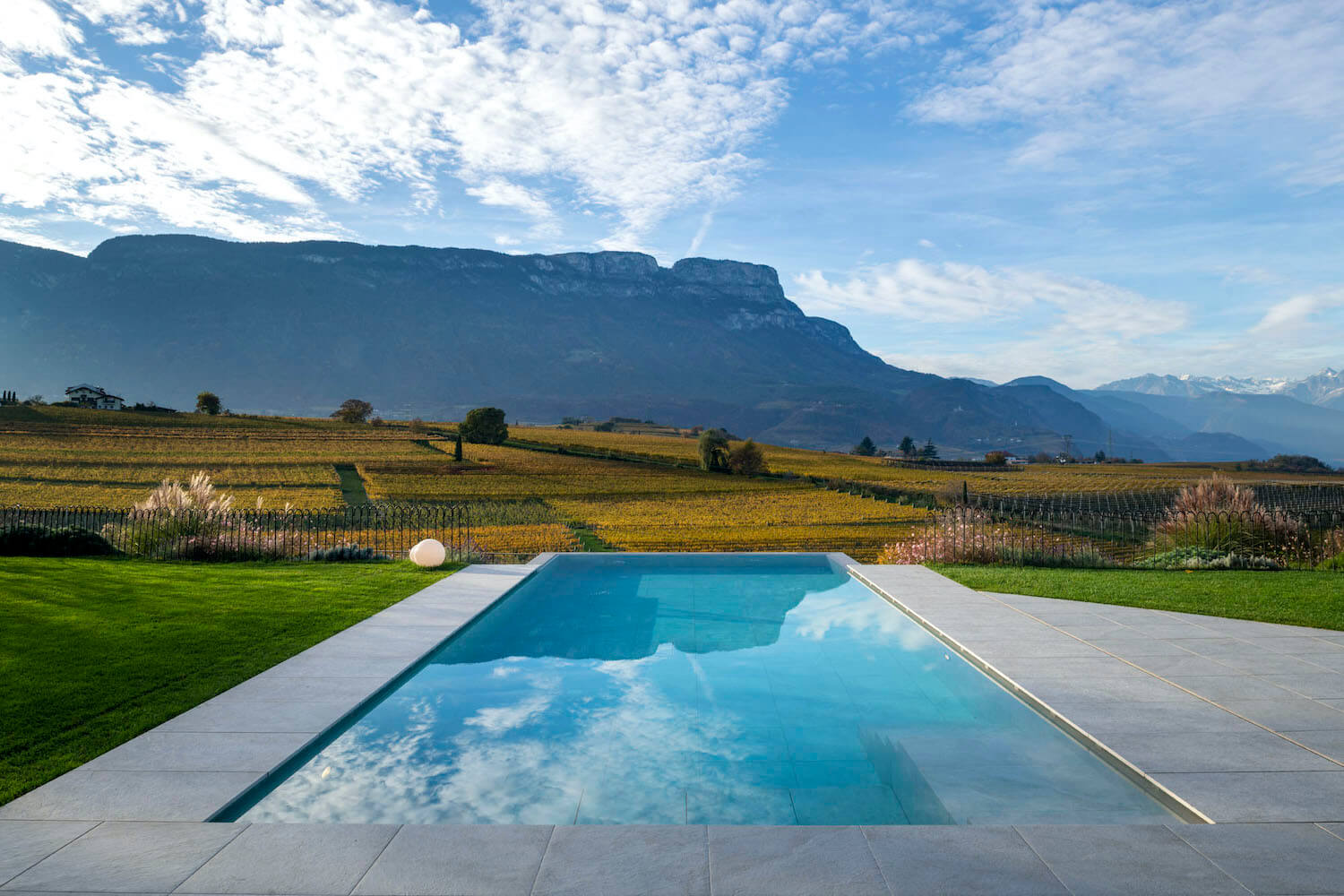












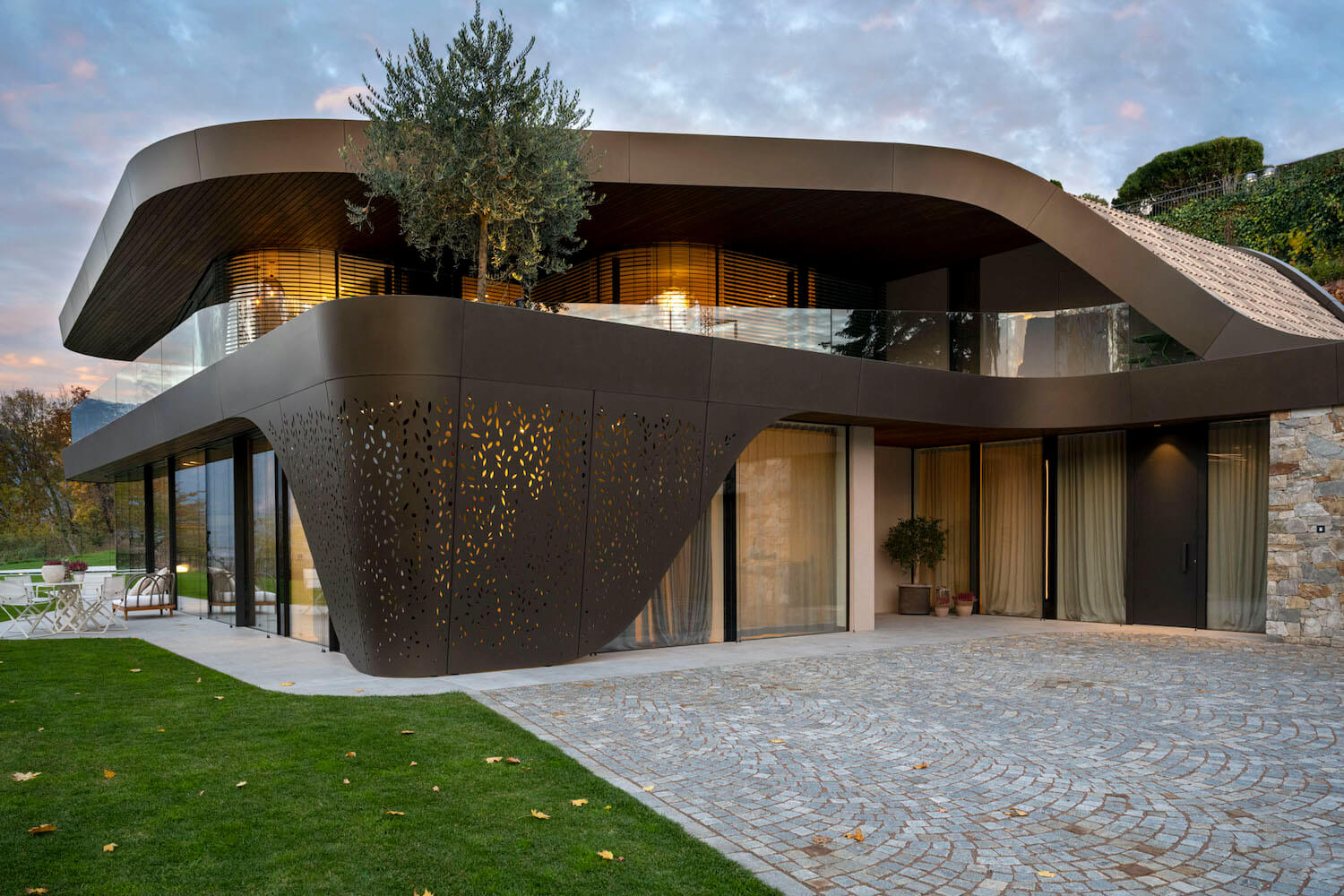


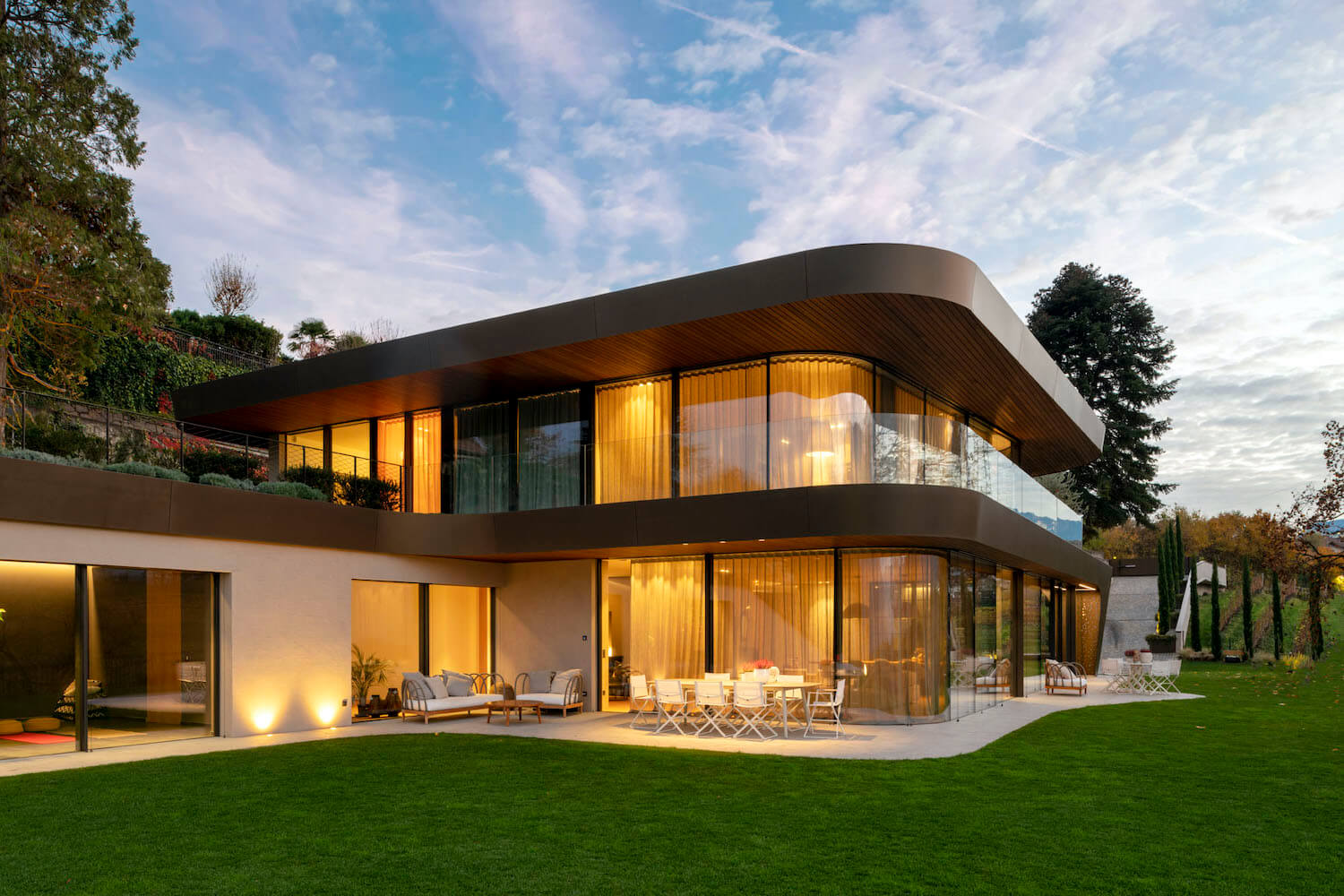

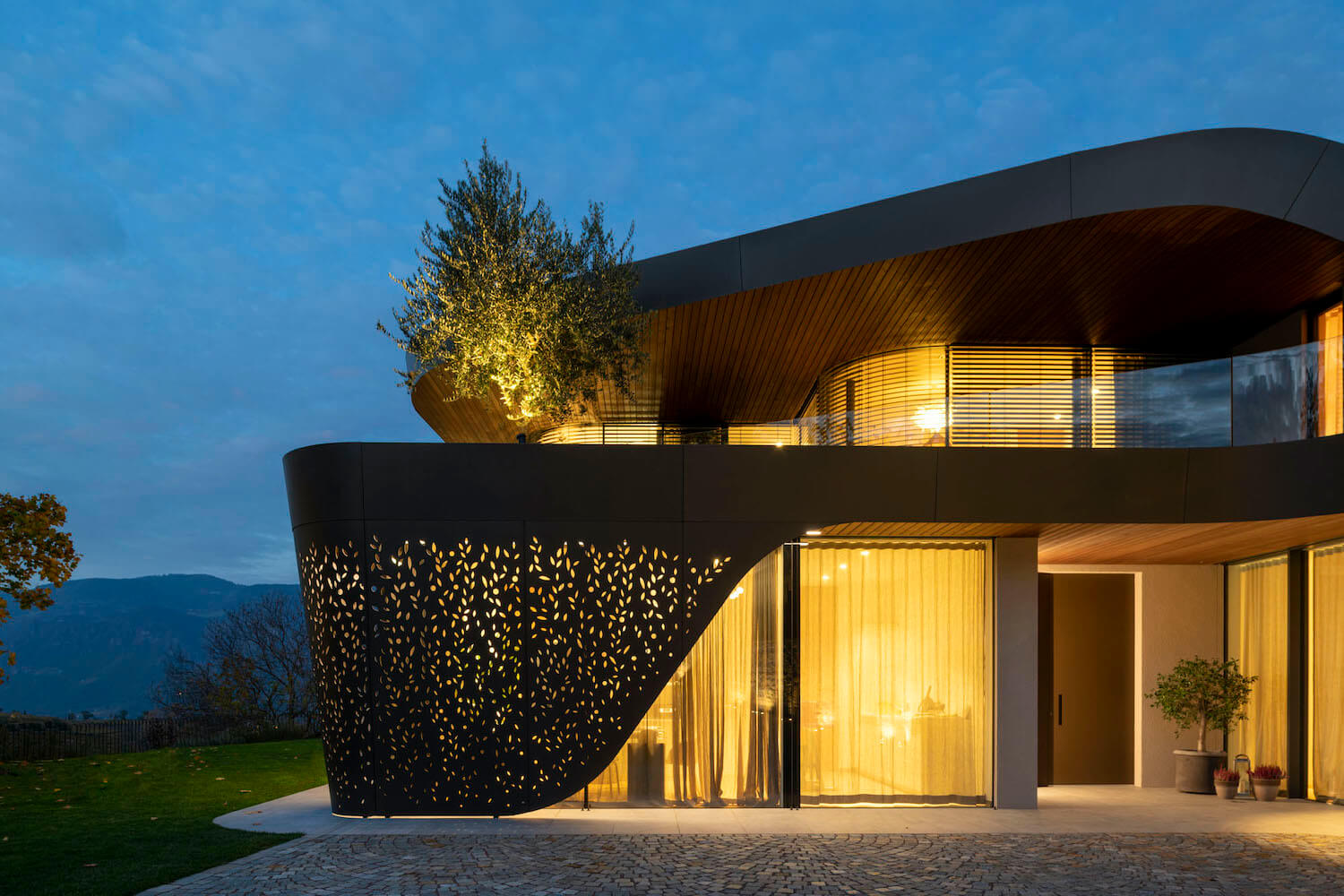


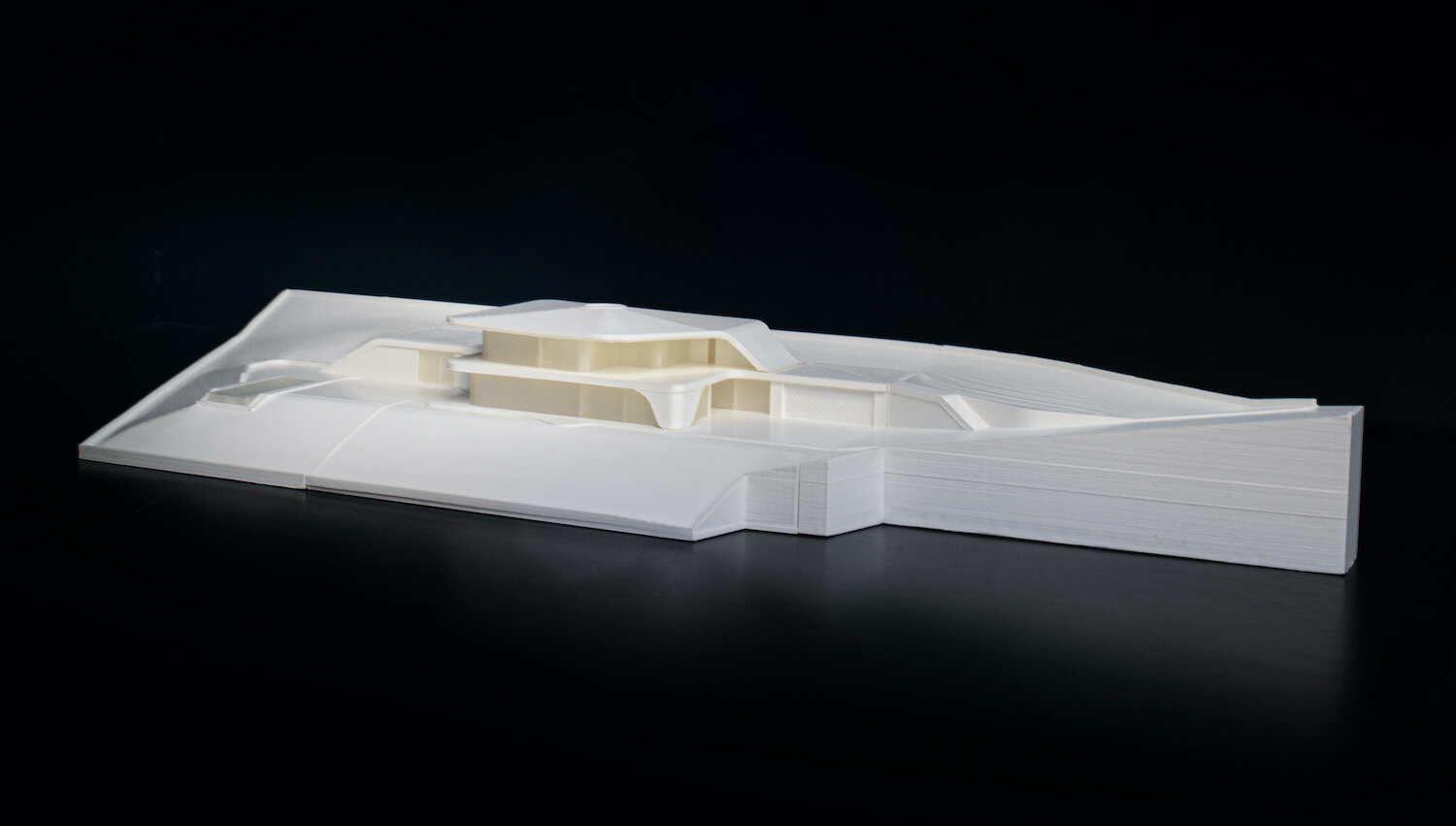



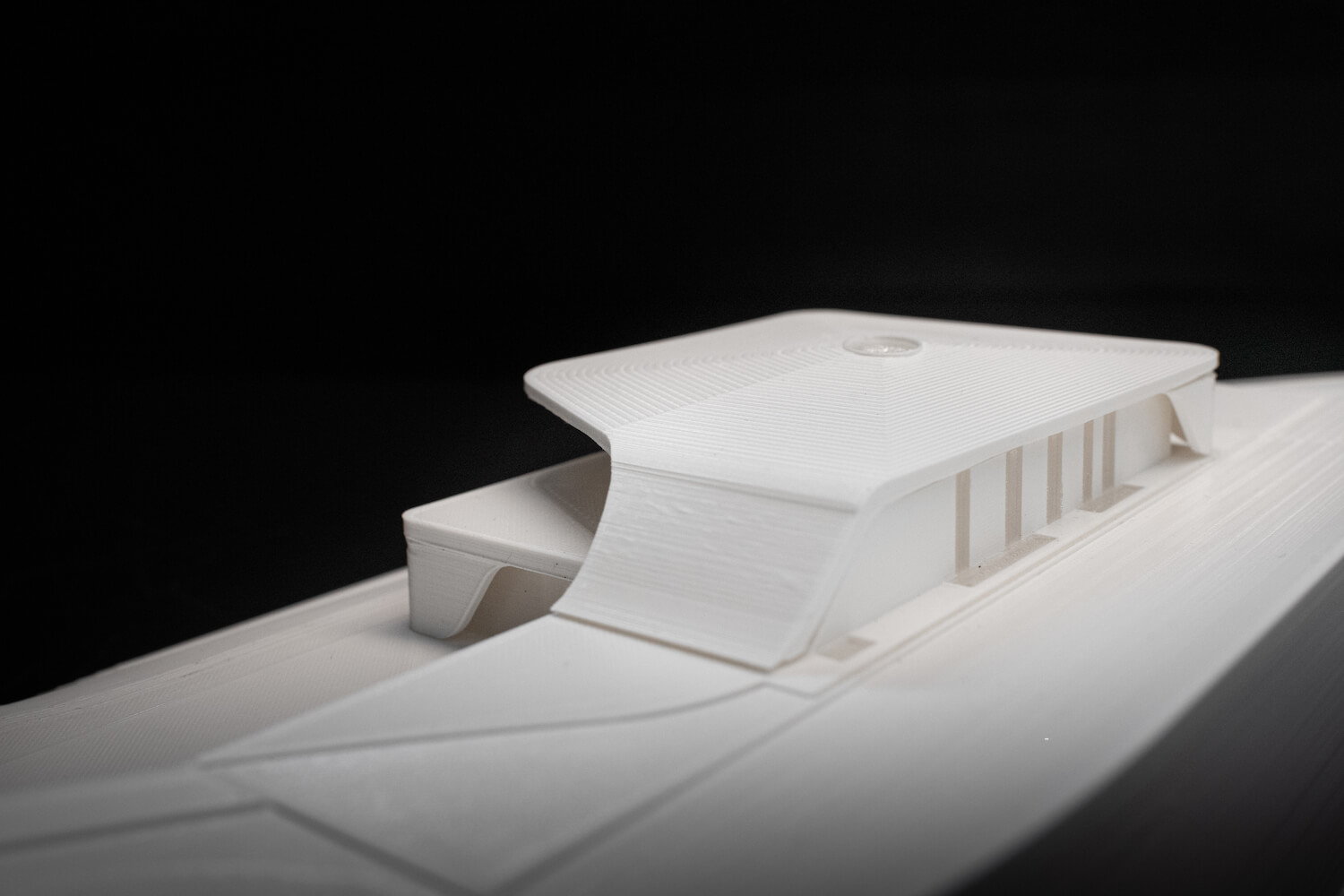








About Monovolume Studio
The architecture office monovolume has been working in the sector of architecture and design since 2003 piloting projects, that go from urban design to interior design and furnishing.
The architects met at the faculty of architecture at the University of Innsbruck, where they have already collaborated and worked together on projects. The participation at several national contests has given them the opportunity to carry out a number of successful projects which laid the foundation stone of the actual teamwork and the beginning of the mutual professional activity.


